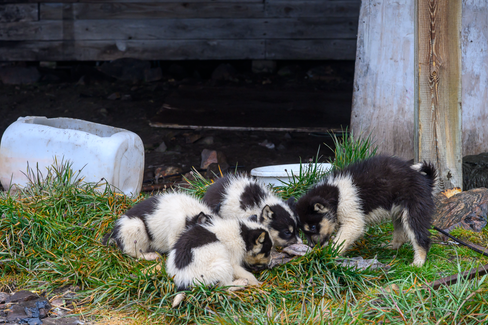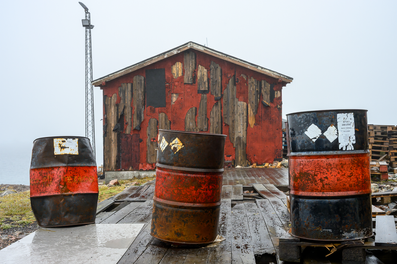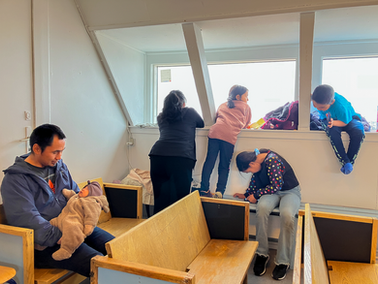Savissivik, Greenland: August 5, 2025
- Cecilia Clark

- Sep 18
- 3 min read

About 10,000 years ago a portion of a 100 tonne (220,500 pound) iron-rich meteorite (estimated weight before it exploded) landed on Meteorite Island. The meteor is known as the Cape York Meteorite; pieces of the meteorite are housed at many museums including the American Museum of Natural History.
The Inuit discovered the metal and began breaking off pieces using hammerstones, then shaping the fragments into blades, harpoon tips, and other tools by grinding and polishing. The largest fragments weighed many tons and were used as a community source of iron for generations. Despite never smelting the metal, the Inuit developed a sustainable method of cold-forging. Tools made from the meteorite have been found in archaeological sites as far away as 1,000 miles (1600 km).
Savissivik, located on Meteorite Island, means "the place where you find iron and metal for knives." Just 60 people live in Savissivik, and thousands of Little Auks nest in Savissivik. Little Auks are related to the Great Auk (a flightless bird extinct due to human depredation) and penguins. They are black and white and although they do fly, their wings were made for long underwater dives. Savissivik was alive with the noise of the busy Little Auks. The green mounds of vegetation are due to the guano furnished by Little Auks.
In the spring residents of Savissivik use long-handled nets to snare Little Auks as they fly by. The Little Auks are used to make a fermented dish called kiviaq. The Little Auks are bundled into a seal skin, feathers and all, and left to ferment under a house for several months. Kiviaq is a wintertime dish served during special occasions.
We went ashore to learn more about life in Savissivik. We met a man who told us, through an interpreter, about life as a hunter. He is wearing polar bear pants, boots of seal skin, and an fur anorak made of dog with some touches of fox and polar bear. He told us about a frightening experience he endured when a polar bear attacked him. He showed us a scar on his hand made by the bear who, at this point, was on the sled. His senior dog fought the bear and saved him. In the first photo he is standing in front of his hunting sled with a tent over it. This is how he camps on long hunting trips. The last photo is of his kayak which appears to be made of blue plastic tarp. Inuits have become very adept at recycling for their purposes. Before plastic, the kayak would have been covered with three seal skins carefully stitched together, by hand, to be watertight.
One house had a litter of puppies under their house. The puppies were more interested in whatever they were chewing on than the people walking past them. The adult dogs also paid us no mind.
Savissivik can experience destructive winds known as piteraq. A piteraq is a powerful, cold wind that descends rapidly from the Greenland ice sheet. These winds can appear suddenly, blowing at speeds that exceed 111 mph (50 m/s), and cause extensive damage to buildings and infrastructure. Some of the homes still show the result of the last wind storm.
The day was gray and wet. We visited the church to warm up a little and found a young family inside. The baby girl is just 2 months old.
In the afternoon, we cruised in zodiacs through an iceberg graveyard. Although the photos don't show it, the formations were huge.
While we were cruising the iceberg graveyard, a large contingent from Savissivik toured the ship. They piled into the zodiacs as we were getting off. That made me smile.
Tomorrow: Dundas (Old Thule)




























































Comments